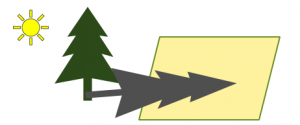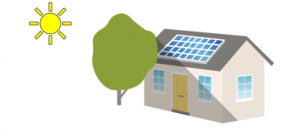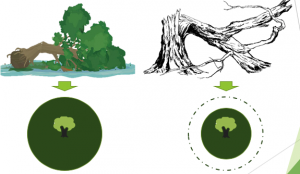LiDAR Data
The LiDAR data has been used in the first part of analysis is very old, it was published on 2013. This project was analyzing trees, and the from the research in methods section we can see that some of the trees have the amazingly fast growing speed. From 2013 to 2018, the size of tree canopy can increase significantly. This will cause the precision and accuracy of the analysis decrease. The current results (at year 2019) of tree shadow size on each nearby house are predicted to be larger than that in this project.
It is worth to mention that the city of Vancouver published a new LiDAR data of 2018 after I finished this project. So, for future analysis, it is worth to analyze the 2018 data and compare the result with this project’s result. By analysis the difference between 2018 and 2013, we can see how the shadow coverage increase or decrease during the past 5 years, and therefore we can conclude whether the city is making a effective management of city trees.
Shadow Projection
The shadow coverage value is not the real tree shadow size on each rooftop, it is just an indicator of which house and which aspect of the rooftop could be influenced. This is due to each building has its own height, some part of the tree shadow will be projected on the wall, as shown in below.


Figure 6. Tree shade Projection in this analysis (left), and real-world projection (right).
Due to this reason, the actual shade size on each building’s rooftop is smaller than predicted. However, it still influences people’s life, because the tree still blocks the sunlight shining through the windows or balcony. Thus, frequent pruning is needed.
Fallen Tree Damage Area
Also, the area of fallen tree damage is actually smaller than predicted. Because not every tree will fall form its roots, it can also fracture form the trunk (as illustrated below).

Figure 7. The potential tree falling area in this analysis—the uprooting situation (left), and another possible situation in real-world (right).
Due to this reason, many houses in the study area may not be influenced by fallen tree. But this does not mean the potential danger is gone. As mentioned before, there are many reasons could contribute to falling of a tree, one very important contributor is the wind power, very strong wind can carry the fallen branches and even fallen trees to anywhere.
In addition, many trees do not fall only because of strong wind, they fell because their roots are damaged by soil microorganism and topographic exposure (Schaetzl et.al., 1989). These damages can be detected by frequent field check of each tree. Therefore, the city needs pay more attention to city tree management.
Further study
Based on above discussion about the potential error, some further studies can be conducted to correct those minor inaccuracy in this project.
1. For example, to take all factor (i.e. wind power, tree trunk strength, crown size, etc.) that could influence the falling of tree into consideration. A weight overlay model can be used to determine each factors’ influence on the tree falling situation. And produce a more precise and more accurate analysis on fallen tree danger.
2. Also, this study can extend to rooftop shade coverage analysis for solar panel. Analyzing where is the potential shaded area on rooftop can provide some clue on where to install the solar panel on each house’s roof.
3. If expand the study area to whole city, the result can become a risk assessment of wind storm damage, and it will indicate where should be taken care of when wind storm come, and which houses will be influenced by the wind storm.